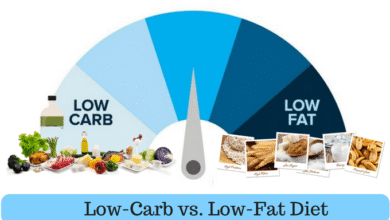
Have you ever noticed how your mood, energy, and focus can swing wildly after eating something sugary or heavy in refined carbs? One moment you’re alert and cheerful, and then suddenly, you feel tired, irritable, or craving another snack. This isn’t just “being hungry again”; it’s your blood sugar levels at work. Across Africa, Europe, and even globally, millions struggle with unstable blood sugar, often without even realizing it. It’s not only people with diabetes who should be concerned—unstable blood sugar affects weight, energy levels, mental health, and long-term cardiovascular wellness.
Now, imagine being able to stabilize blood sugar naturally without always depending on expensive medications or rigid diets that leave you starving. That’s where keto meals come into the picture. The ketogenic lifestyle, rooted in low-carb, high-fat, and moderate-protein eating, provides a steady source of energy. Instead of your body running on quick-burning glucose, it relies on fat—slow-burning and long-lasting. Think of it like switching your home’s energy source from unreliable power that goes on and off to solar panels that steadily deliver power all day. Keto works the same way for your body. In this blog, you’ll discover exactly how to stabilize blood sugar naturally with keto meals, what to eat, what to avoid, and how to make it practical for your lifestyle, whether you’re in Lagos, London, or Lisbon.
Read Also What Food Do Diabetics Need to Stay Away From? A Complete Guide to Diabetes Nutrition
What Is Blood Sugar and Why Does It Fluctuate?
Blood sugar, or glucose, is the simplest form of energy your body runs on. It’s the fuel that powers everything, from your brain to your muscles. When you eat carbohydrates—whether it’s bread, rice, yam, or pasta—your body breaks them down into glucose. That glucose enters your bloodstream, causing your blood sugar levels to rise. To manage this, your pancreas releases insulin, a hormone that helps move glucose into cells to be used for energy or stored for later.
Here’s the problem: in modern diets, especially across Africa and Europe, meals are often overloaded with refined carbs and sugar. This creates a constant cycle of blood sugar spikes and crashes. You eat, your blood sugar shoots up, insulin floods in, and then your sugar drops quickly, leaving you tired, hungry, and craving more. Over time, this constant rollercoaster puts enormous stress on your pancreas. Eventually, it may stop responding properly, leading to insulin resistance—a dangerous step toward type 2 diabetes.
Fluctuations in blood sugar don’t just impact your physical health; they also affect your mind. You might experience mood swings, brain fog, poor concentration, or sudden irritability—all tied to unstable glucose. Stabilizing your blood sugar is not about eliminating carbs completely; it’s about eating smarter. That’s where keto meals offer an incredible solution. By shifting your energy source away from sugar and onto fat, you break free from those wild highs and lows, living with steady energy throughout the day.
Understanding the Keto Diet for Blood Sugar Control
The ketogenic diet, often simply called “keto,” flips the traditional food pyramid upside down. Instead of making carbohydrates your main source of energy, keto focuses on fats, with moderate protein and very low carbs. When carbs are restricted to 20–50 grams per day, your body no longer has enough glucose to burn. Instead, it turns to fat for energy, breaking it down into molecules called ketones. This metabolic state is known as ketosis.
Why does this matter for blood sugar? Because with so few carbs in your system, your blood sugar remains low and stable. There are no wild spikes after eating, no sudden crashes, and no constant demands for insulin. It’s like replacing sugar’s quick flare-ups with a steady-burning lantern that lights your path all day long. For people in Africa, where diets are heavily carb-based (rice, yam, cassava, maize), or in Europe, where bread, pasta, and potatoes dominate, keto presents a refreshing alternative.
What makes keto particularly powerful is that it doesn’t just stabilize blood sugar—it also improves insulin sensitivity. This means your cells respond better to insulin, reducing the risk of developing type 2 diabetes. More importantly, keto meals are versatile. You don’t have to give up tasty food; you just swap ingredients. Cauliflower replaces rice, zucchini turns into noodles, and coconut flour substitutes wheat. It’s about enjoying delicious meals while giving your body a chance to operate at its best.
The Science Behind Keto and Blood Sugar Stabilization
At its core, blood sugar stabilization with keto comes down to controlling how your body processes energy. In a high-carb diet, your body is like a car engine running on cheap, low-quality fuel. It sputters, burns out quickly, and demands refills. In contrast, when you follow keto, your body runs on fat—a dense, clean-burning source of energy. Ketones, produced from fat metabolism, act as a stable fuel for your brain and muscles.
Scientific studies back this up. Research published in Diabetes Therapy found that individuals with type 2 diabetes who followed a ketogenic diet saw significant reductions in HbA1c levels—a long-term measure of blood sugar control. Another study from The Journal of Nutrition and Metabolism highlighted improved insulin sensitivity and reduced fasting glucose levels in keto dieters. Simply put, when you eat fewer carbs, you produce less glucose. Less glucose means less insulin. And less insulin demand means your body operates more efficiently.
This effect isn’t limited to diabetics. Even healthy individuals benefit from steady energy, sharper focus, and fewer sugar cravings. Keto prevents that mid-afternoon slump many people face after a carb-heavy lunch. Instead, energy levels remain consistent, much like a steady heartbeat instead of erratic pulses. Think of keto as teaching your body financial discipline. Instead of spending money (energy) recklessly and running out, it learns to invest wisely, giving you long-term returns in health and vitality.
Top Keto Foods That Stabilize Blood Sugar
When choosing keto foods, your goal is simple: avoid carbs that cause spikes and embrace fats and proteins that fuel steadily. Let’s break it down:
- Avocados: Loaded with healthy fats, potassium, and fiber, avocados slow digestion, which means glucose releases more gradually.
- Eggs: Affordable and protein-packed, eggs provide satiety, preventing constant hunger and sugar cravings.
- Leafy Greens: Spinach, kale, and pumpkin leaves (ugwu in Nigeria) are nutrient-dense, low-carb options that provide vitamins without affecting blood sugar.
- Fatty Fish: Salmon, sardines, mackerel, or tilapia bring omega-3 fatty acids, which reduce inflammation and improve heart health.
- Nuts and Seeds: Almonds, chia seeds, and walnuts are high in fat and fiber, making them perfect blood sugar stabilizers.
- Healthy Oils: Coconut, olive, and avocado oils are excellent for cooking or drizzling, offering clean fats for energy.
Each of these foods works together to give your body sustained fuel. Instead of carbs that burn like paper in a fire, they provide energy like solid wood—steady and reliable. They also reduce the likelihood of cravings, making it easier to maintain long-term blood sugar stability.
Foods to Avoid if You Want to Stabilize Blood Sugar
To stabilize blood sugar naturally with keto meals, it’s just as important to know what not to eat. Some foods act like sugar bombs, sending your glucose levels soaring before crashing down. Avoid these:
- Refined grains: White rice, pasta, and bread cause rapid spikes.
- Sugary drinks: Sodas, energy drinks, and even sweetened juices overload your body with glucose.
- Baked goods: Cakes, cookies, pastries, and doughnuts—loaded with sugar and refined flour.
- Starchy vegetables: Potatoes, sweetcorn, and yams may seem “natural” but raise blood sugar fast.
- Processed snacks: Packaged chips, biscuits, and “low-fat” snacks often hide sugar.
Eating these is like pouring petrol onto a small fire. It blazes up quickly but burns out just as fast, leaving you exhausted. If you want steady energy and health, you must steer clear of these sugar-spiking culprits.
Meal Planning: A Keto Day to Balance Blood Sugar
Meal planning makes keto simple and practical. Here’s how a day could look:
| Time of Day | Meal | Example |
|---|---|---|
| Breakfast | High-fat, low-carb | Scrambled eggs with avocado and sautéed spinach |
| Lunch | Protein-rich | Grilled chicken breast with cauliflower rice and greens |
| Snack | Healthy fats | Almonds with unsweetened Greek yogurt |
| Dinner | Omega-3 focus | Grilled salmon with garlic butter kale |
Planning meals this way ensures your blood sugar remains stable all day. You’re not rushing for snacks, nor battling fatigue by midday. Instead, your body burns fat smoothly, keeping your energy consistent—like a well-oiled machine.
Why Keto Works Better Than a Standard Low-Calorie Diet
Many people believe eating fewer calories is the answer to stabilizing blood sugar, but here’s the truth: not all calories are equal. A sugary 300-calorie soda doesn’t act the same way in your body as a 300-calorie salmon fillet. The former spikes your glucose; the latter stabilizes it.
Low-calorie diets often leave people hungry, cranky, and unsatisfied, making them hard to sustain. On the other hand, keto focuses not on counting calories but on improving quality. High-fat foods keep you full, reduce cravings, and naturally lower your overall calorie intake. The result? Weight loss without hunger and, more importantly, stable blood sugar.
It’s the difference between trying to survive on constant snacking versus eating meals that actually fuel you properly. Keto wins every time.
Keto for Diabetics: Is It Safe?
For people with type 2 diabetes, keto can be life-changing. By cutting carbs, many diabetics find they need less insulin or medication to manage their blood sugar. In some cases, individuals have even reversed insulin resistance. However, caution is necessary. If you’re on medication, suddenly dropping carbs could cause blood sugar to fall too low (hypoglycemia). That’s why working with a doctor is essential.
Keto is not about starving; it’s about giving your body the right fuel. For diabetics, this can mean enjoying better energy, weight loss, and reduced dependency on medication. But it must be done with professional guidance.
African-Inspired Keto Meals for Blood Sugar Balance
African cuisine doesn’t need to be abandoned when going keto—it just needs adjusting. Instead of yam porridge, try cauliflower porridge seasoned with palm oil and spices. Instead of cassava fufu, make almond flour swallow with soups. Suya, the beloved Nigerian spiced beef skewer, is already keto-friendly if you skip sugary marinades.
Jollof rice? Swap in riced cauliflower for a keto version bursting with flavor but without the carb overload. These simple tweaks mean you can still enjoy familiar, comforting meals while stabilizing blood sugar naturally with keto meals.
European Keto Meals That Work for Blood Sugar Control
Europe offers plenty of keto-friendly foods too. Replace bread with almond or coconut flour bread. Instead of pasta, use zucchini noodles (zoodles). Snack on cheese, olives, and cured meats instead of crisps and biscuits. Traditional soups, like mushroom or creamy broccoli, can easily be made keto with cream or coconut milk.
By making these swaps, Europeans can enjoy traditional meals while still stabilizing blood sugar naturally.
The Role of Intermittent Fasting with Keto
Pairing intermittent fasting with keto is like adding turbo to your car engine. By eating within an 8-hour window (for example, 12 p.m.–8 p.m.), your insulin levels stay low for longer, and your body burns fat more efficiently. Combined with keto, this creates double protection for blood sugar stabilization.
Many people find fasting easier on keto since fats keep them full. Instead of waking up ravenous, they glide through the morning energized, proving how naturally sustainable this lifestyle is.
Supplements That Support Blood Sugar Stability
While food is the foundation, certain supplements can enhance results:
- Magnesium improves insulin sensitivity.
- Omega-3 fatty acids reduce inflammation.
- Apple cider vinegar lowers post-meal sugar spikes.
- Chromium supports glucose metabolism.
These are not replacements for food but helpful boosters—like adding natural reinforcements to your army in the fight for stable blood sugar.
Mistakes People Make on Keto
Even the best diets can fail if mistakes are made. Common errors include eating too much protein (which can convert to glucose), ignoring hydration, forgetting electrolytes (sodium, magnesium, potassium), and relying on packaged “keto snacks” that are often loaded with hidden sugars.
Avoid these, and your journey to stabilize blood sugar naturally with keto meals will be smoother, more sustainable, and far more effective.
Long-Term Benefits of Keto for Blood Sugar Control
The benefits of keto go beyond short-term fixes. Over months and years, people on keto experience:
- Weight loss, especially around the belly
- Reduced risk of type 2 diabetes
- Improved cholesterol and heart health
- Mental clarity and sharpness
- Lower inflammation
Keto isn’t just a diet—it’s a lifestyle transformation that resets your relationship with food, energy, and health.
Conclusion
Stabilizing blood sugar naturally with keto meals isn’t just possible; it’s practical, sustainable, and life-changing. By cutting carbs, embracing healthy fats, and adjusting cultural meals in Africa and Europe, you can balance your blood sugar, reduce cravings, and enjoy lasting health benefits. Keto gives you the freedom to eat smarter, live healthier, and avoid the sugar rollercoaster.
Read Also Best Morning Foods to Control Diabetes Naturally | Healthy Breakfast for Blood Sugar Management
FAQs
1. Can keto meals completely cure diabetes?
No, but they can drastically improve blood sugar control and reduce medication dependence when managed under medical supervision.
2. How fast can keto stabilize blood sugar?
Most people see improvements within days, with long-term markers like HbA1c improving in 3–6 months.
3. Can I eat fruits on keto?
Yes—stick to low-carb fruits like berries, avocado, and olives.
4. Is keto expensive in Africa or Europe?
Not at all. Affordable options like eggs, local leafy greens, and fish are budget-friendly staples.
5. Can I combine keto with exercise?
Absolutely. Exercise enhances insulin sensitivity, supports weight loss, and works hand-in-hand with keto for maximum blood sugar control.





One Comment